Ficus bonsai: how to make and care for it?
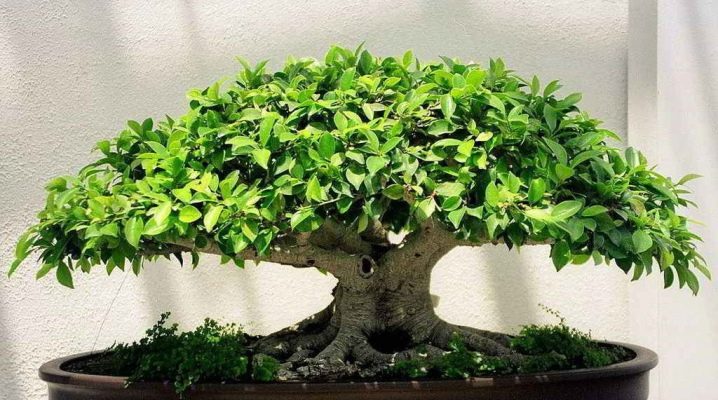
Man is rarely satisfied with what nature has given. He needs to improve and embellish the existing one. One of the examples of such improvement is bonsai - one of the components of the culture of Japan, which is so fashionable now in Russia.
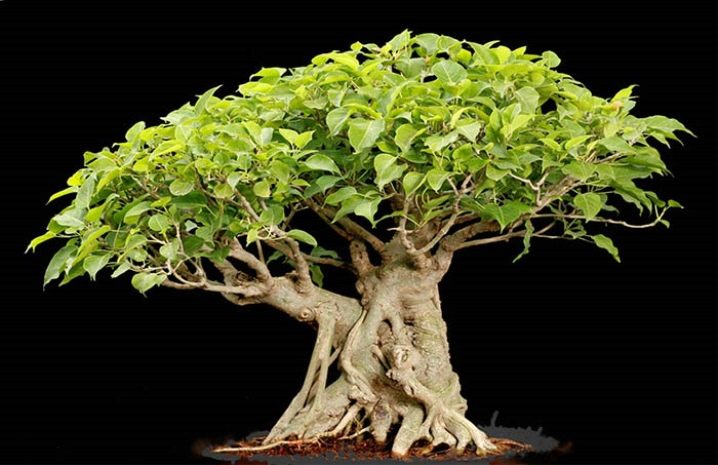
What is bonsai?
It is a mistake to call bonsai a bonsai variety. This is completely untrue. Bonsai is the name of the most common tree, but the way it is grown is unusual. Traditionally, bonsai are small and crooked. Thus, it is grown intentionally. Let's see why this is so. The art of "bonsai" originally originated not at all in Japan, but in China and India. It was brought to Japan by wandering monks in the 6th century. Of course, it was the Japanese who perfected and developed the art of gardening, dividing it into as many as 15 directions. Each of the directions provides for giving the tree a certain, but always bizarre shape.
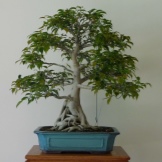
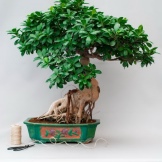
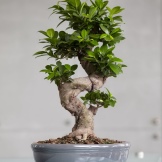
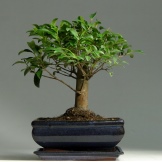
For example, one of the directions is called "broom", the other "creeping forest" - it is clear that the shape of the tree will be appropriate. By the way, it is important to note that not only trees, but also bushes and herbs can be involved in the art of bonsai. The essence of bonsai is to emphasize the beauty of nature. In order to give the tree the maximum naturalness, the bonsai master needs to have an artistic vision, in addition to developed gardening skills. He needs to design in his thoughts, see the result - how a grown tree should look like, and then figure out how to achieve this. This can be done both within indoor plants and in a garden.
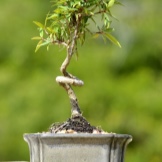

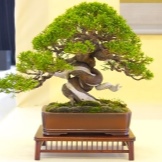

It is important to know that in every country and area, the flora that grows in it is used to create bonsai. Therefore, birch and aspen are quite suitable for Russia. In addition, it does not have to be one tree, a combination of specimens of the same or different types of flora is possible.
Suitable types of ficus
Any plant is theoretically suitable for bonsai. In practice, for these purposes, ficuses of various varieties are mainly used. They are characterized by the presence of a strong stem, and if you take care of them as needed, they become like a tree. Several varieties of ficus are best suited for growing bonsai trees.
- Ficus sacred - a very "modern" plant, because its stem is characterized by a gray color. To make bonsai, the branches are fixed on a wire and pruned periodically.
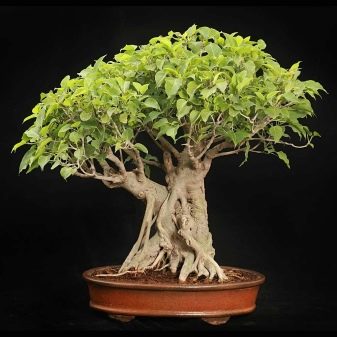
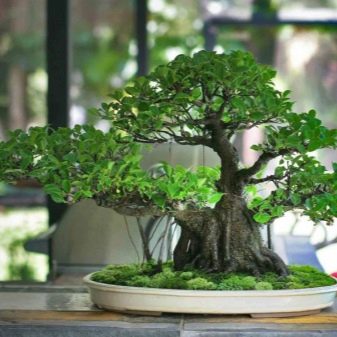
- Bengali (banyan). Strictly speaking, banyan is the name of a form of life not only of Bengali, but also of the sacred ficus. It is typical for them to form on the horizontal branches of an adult plant, forming the so-called aerial roots. Of course, not all of them reach the ground and grow into it.

- Retuza (blunted) - almost the most popular type of ficus ten years ago, now experiencing a new "boom" of fame. Suitable for beginners in floriculture, but has one significant drawback - it grows very slowly.

- Benjamin (Alfred). This variety is suitable for fans of bizarre shapes, since the stem of Benjamin's ficus bends differently during growth. In addition, it is characterized by both proliferation and accretion. But this variety is not for novice gardeners.
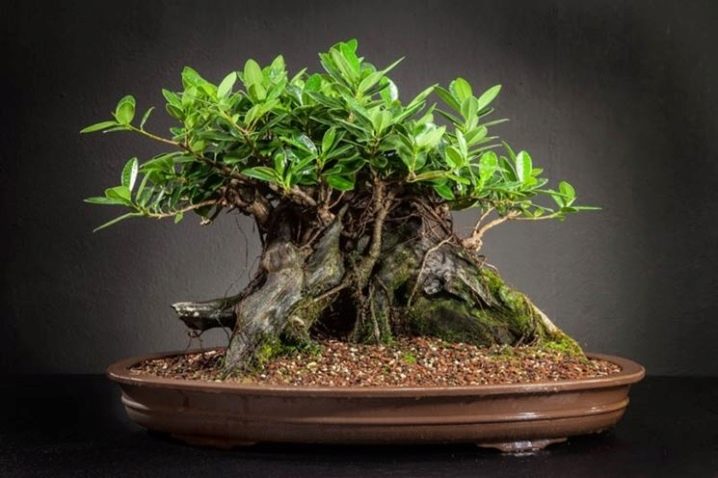
- "Panda" is a favorite variety of the Japanese. It is he who is used for creative haircuts.The presence of small, round, shiny leaves is characteristic. "Panda" calmly tolerates bright light, it can be pruned, and tied up to form a crown.
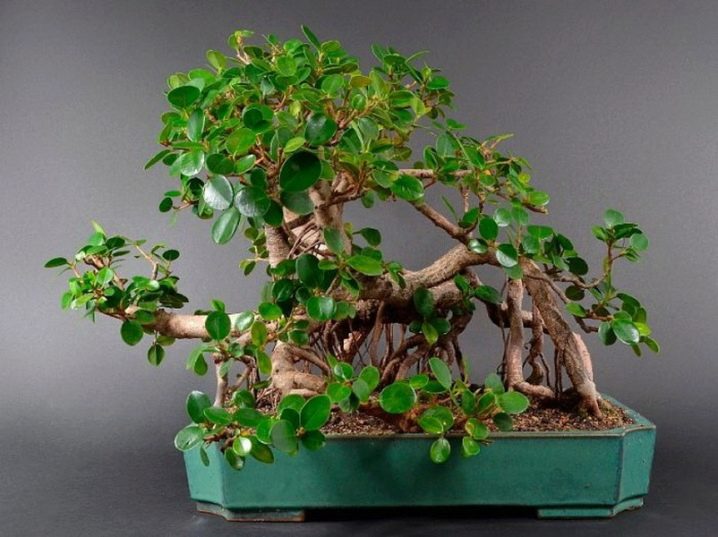
- "Ginseng" has an interesting original shape, its stem is brown, and the leaves are characterized by a heart-shaped shape.
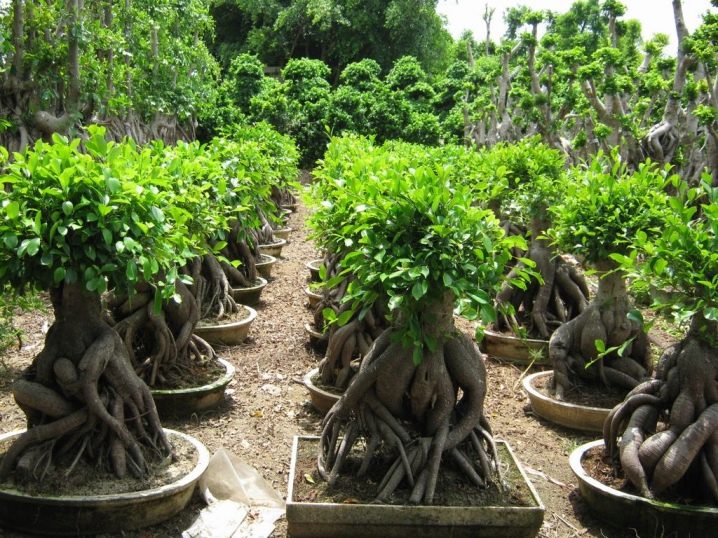
Very well suited for creating bonsai ficus microcarp. This species is notable for the fact that its root system partially protrudes from the ground and takes on bizarre shapes. If this species grows in an apartment, then it will not bloom and bear fruit, as in its habitat. This species has several known varieties:
- "Green Graham" - with a dense dense crown;
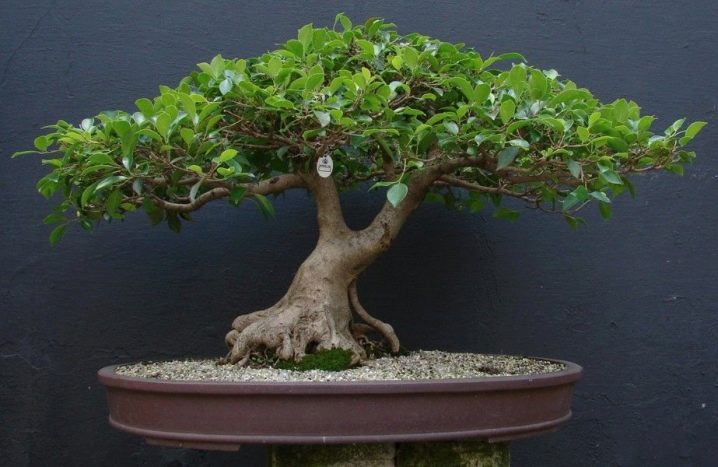
- Westland - with large leaves 11 cm long;
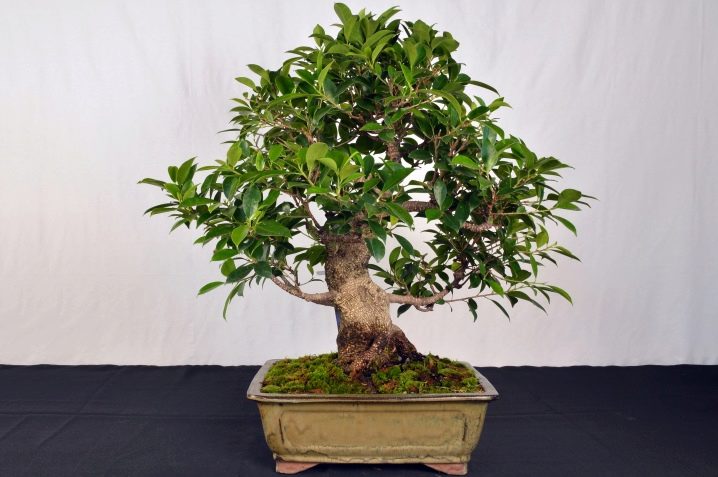
- "Moklame" - in this variety, the leaves, on the contrary, are medium-sized, the shade is dark green, the shape is rounded;
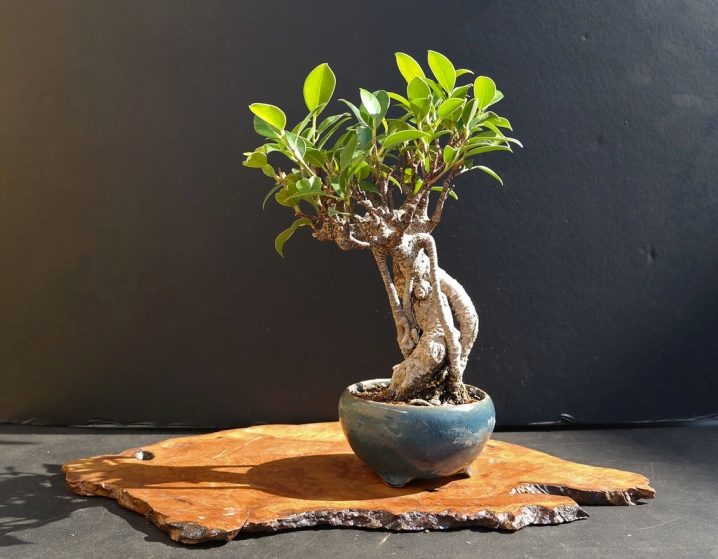
- "Variegata" - differs in the variegated color of the leaves.

Ficus is a very useful plant for the home, since it has the property of purifying the air in the room where it grows.
Choosing a tree shape
There are 6 main types of forms bonsai dwarf trees:
- tekkan - upright trunk;
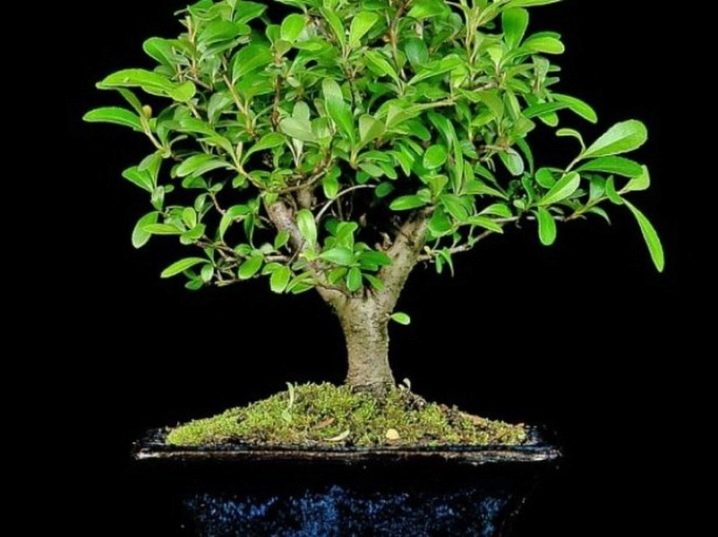
- myogi - the location of the trunk is straight, but it is curved (the ficus of Alfred is well suited for this type);
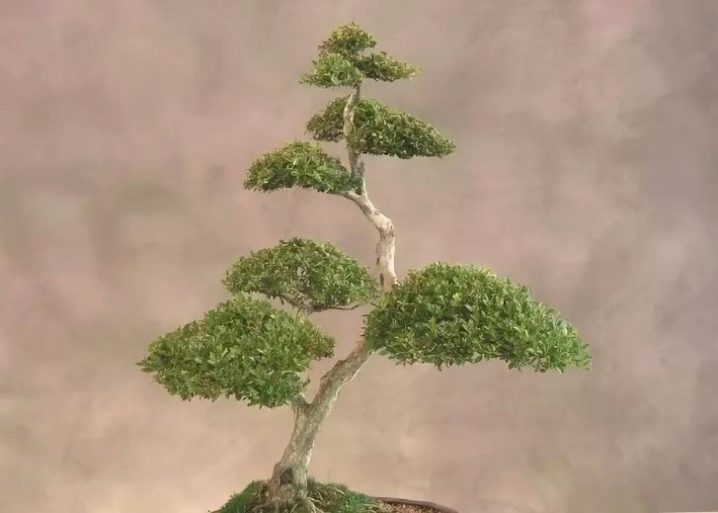
- shakan - the trunk is inclined, and the roots seem to be slightly turned out;
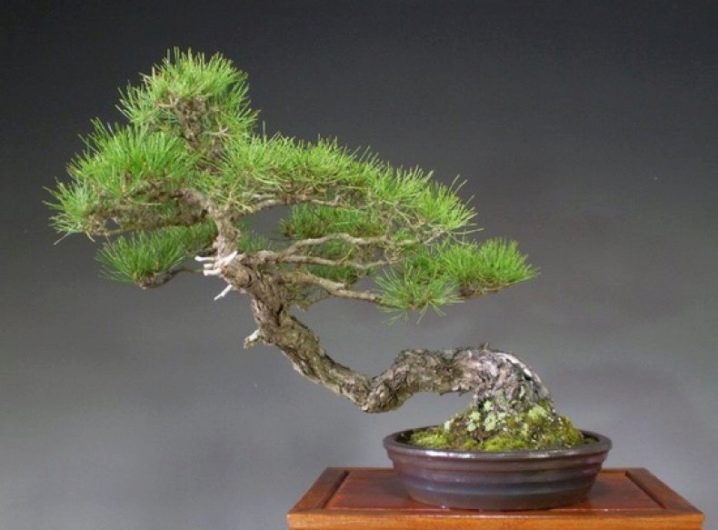
- sokan - the trunk is bifurcated;
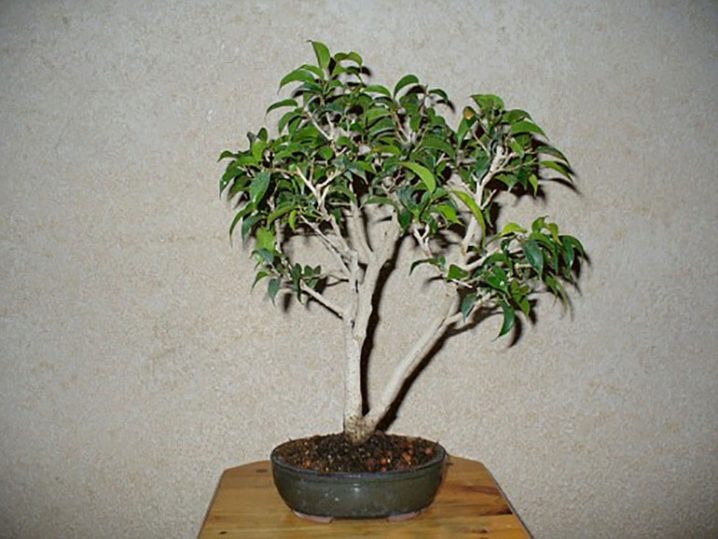
- hokidati - this form is characterized by the symmetry of the divergence of roots and branches;
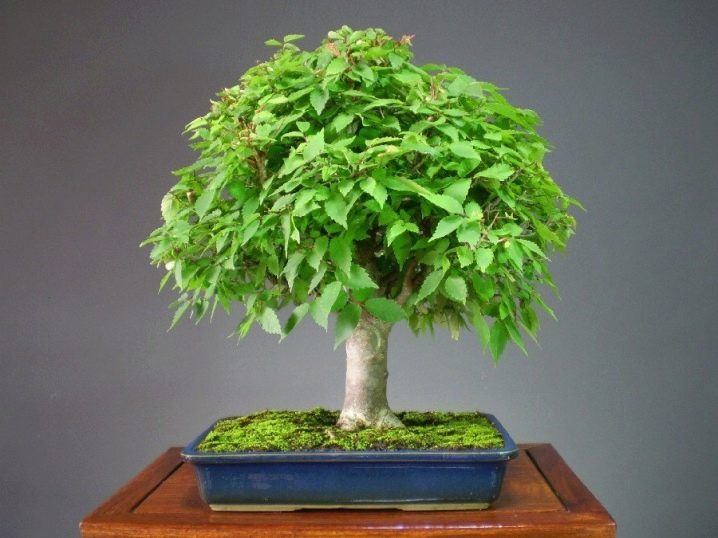
- grove - as the name suggests, the composition includes several plants.
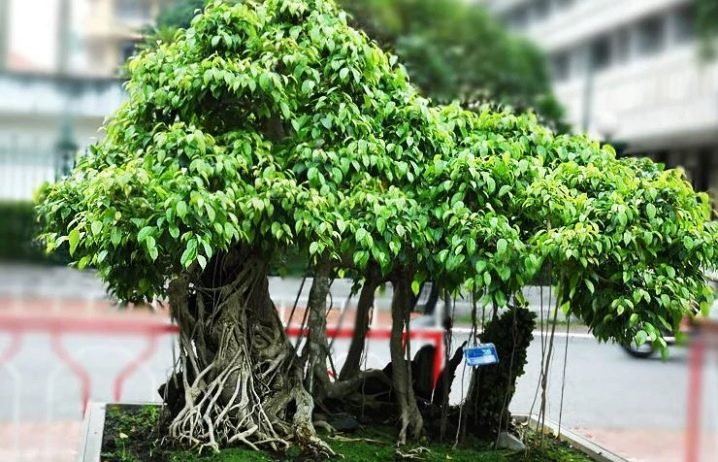
Beginners are advised to start with the chokkan. But you can try any shape by studying the material. The main thing is to be patient, because bonsai cannot be grown quickly.
Pot and soil requirements
Ficus soil cannot be anything. It is good if you purchase a ready-made mixture at a flower shop, but when for some reason this cannot be done, you need to take into account that the soil in which you plant your future tree must contain:
- soil for deciduous plants;
- clay powder;
- sand, which must be washed and calcined;
- humus;
- peat.
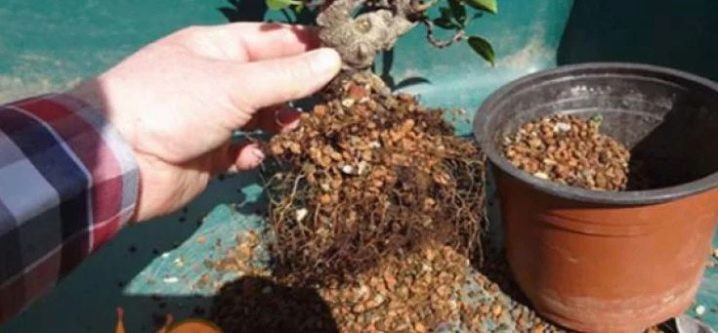
From the constituents of the soil mixture, it is clear that the soil in which the ficus is planted must be loose, low acid, aerated and contain all the nutrients and minerals necessary for the bonsai to grow as expected. Planting container requirements are mostly aesthetic rather than practical. But you still need to take into account that the container should not be completely flat and have a minimum depth of 5 cm.
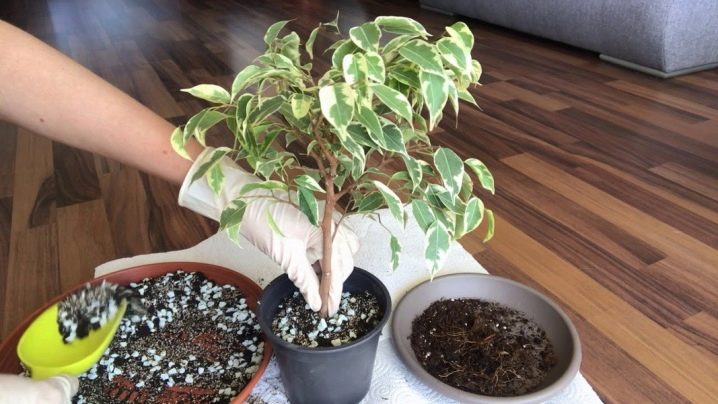
Landing
The plant's adaptation period after purchase lasts about two or three weeks, after which it can be transplanted into another pot. In order to transplant microcarp ficus, you need to purchase a special soil. It is better to transplant ficus in the spring. The optimal frequency is every two to three years. Then it is necessary to update the substrate. Consider planting a plant step by step. She, like the transfer, is carried out by transshipment. This will keep the root system intact. The selected container must have drainage holes, if they are absent, they must be made. Otherwise, excess moisture will not be removed, which can lead to root rot. At the bottom of the pot, there must be a drainage layer about 3 cm high. For it, you can use both a ready-made mixture and ordinary pebbles, crushed stone, stones, broken brick.
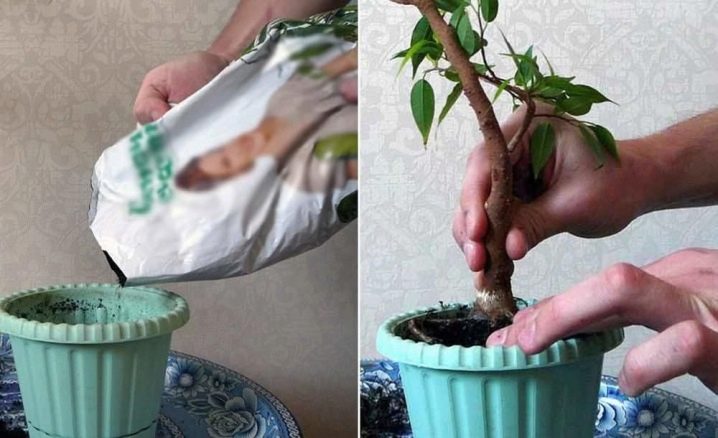
Ficus can be propagated both by cuttings and by air layers. The method of propagation by means of suckers is also successful. Transplanting even a small, even a large ficus with your own hands is not particularly difficult. Cuttings are made from the last week of January to September. This method is suitable for apical shoots that are already half lignified. You need to put the shoots in water at room temperature. Naturally, the water needs to be changed periodically. Cuttings stand in water until roots appear on them.After that, they need to be transplanted and covered with transparent film. It is removed when leaves appear on the cuttings.
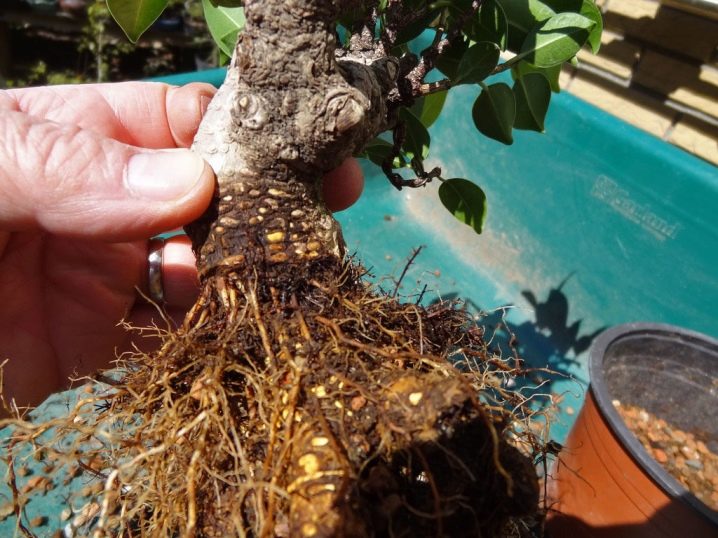
To make an air layer, they choose a place on the shoot of considerable length, and the leaves are carefully removed from it. The bark should be cleaned, then take "Kornevin" and process part of the shoot. Having wrapped the shoot with moist moss, it should be covered with transparent film. As soon as the roots become visible, the shoot must be cut off, the film must be removed. Further (without removing the moss), the shoot is planted in the ground. In order to get a root offspring, a piece of the root must be cut off, put in water for two to three hours, and then planted in the soil mixture, but not completely buried, but left about 3 cm above the soil surface. Cover the planting with cellophane transparent film, do not forget about watering and airing. As soon as leaves appear on the offspring, the film is removed.

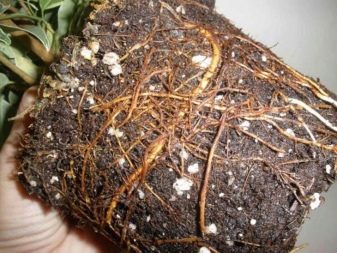
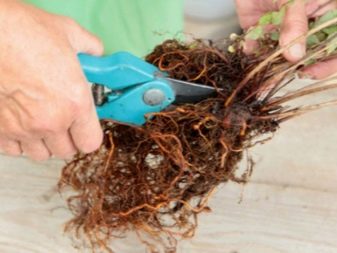
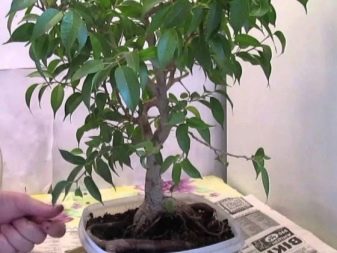
Crown formation and pruning
To form a ficus crown, you need know about some features:
- if you remove the apical bud, the lateral ones will begin to grow faster, the likelihood of getting a lush bush is higher;
- if you cut the plant in the spring, the crown will be several times more magnificent;
- the main shoot is cut at a height not less than 10 cm, ideally 15;
- as soon as the axillary shoots began to grow intensively, they need to be pinched at a length of 10 cm;
- for even development of shoots, bonsai should be rotated so that different sides of the plant are looking at the sun.
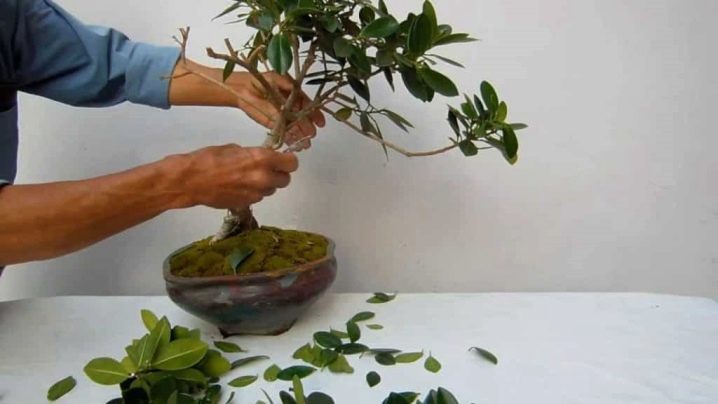
The crown of the plant is best trimmed in the spring. Then:
- natural rejuvenation of the ficus occurs due to the fact that new shoots are growing;
- the desired shape of the plant is achieved faster;
- the ficus begins to branch exactly where it is required;
- branches change the direction of growth.
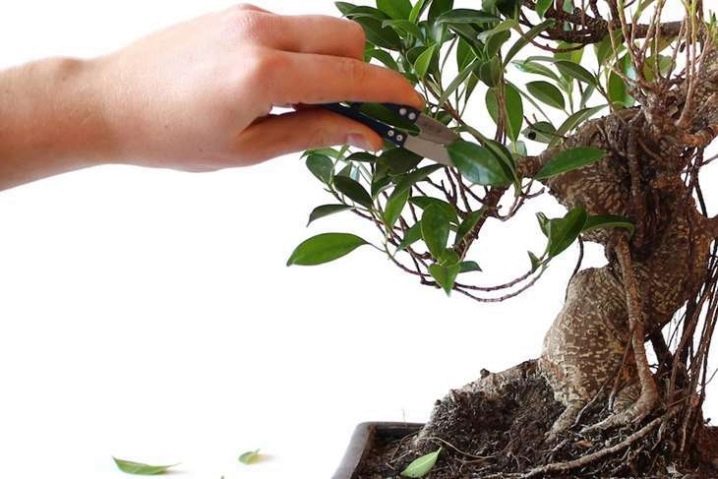
If pruning is done for sanitation purposes, then this can be done regardless of the season. From the time of pruning to transplanting into a new pot, it should take from two to three weeks. If the plant has recently been ill or sick, formative pruning is not performed.
Care
Ficus is a plant that loves light, but the direct rays of the sun should not hit its leaves, otherwise they will fade. Therefore, you need to position it in such a way that the leaves are enveloped by partial shade or diffused light.
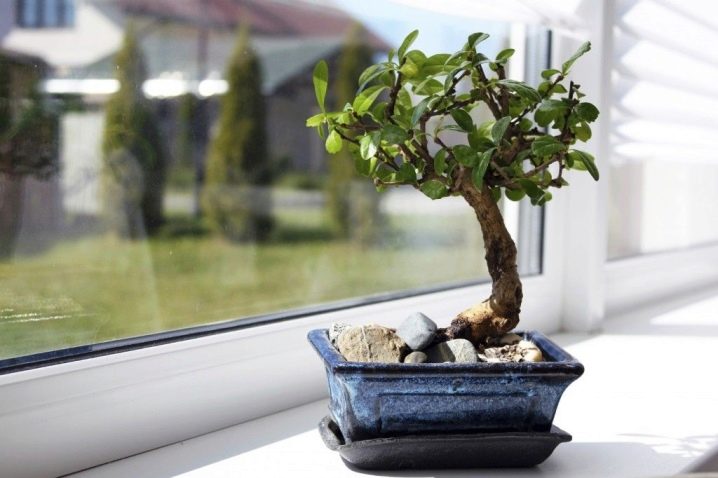
Watering
Each subsequent watering is done after the earthen coma dries. If you water it too abundantly, the ficus will respond by dropping the foliage. It is better to spray the leaves from a spray bottle filled with boiled cool water. In the summer, you can expose the ficus microcarp to the open air, in the winter - keep it in a room where the temperature does not drop below +18 and does not rise above + 24 degrees Celsius.
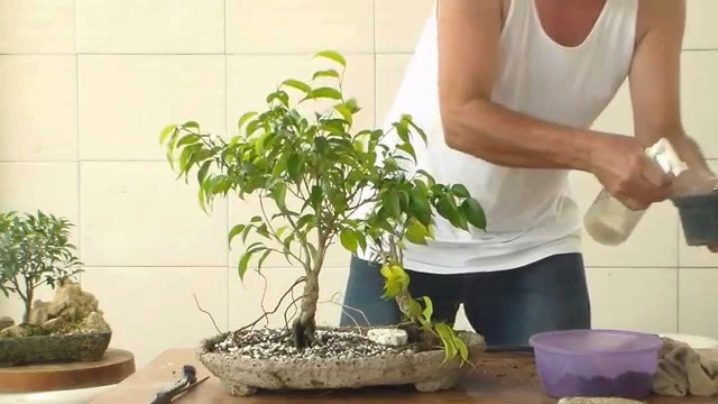
Top dressing
Ficus must be fed every 14 days. This requirement applies to spring and summer. In winter, the ficus so often does not need feeding; this should be done no more than once a month. You do not need to combine any fertilizers at home on your own; for ficus, it is better to purchase both organic matter and chemical fertilizing in flower shops. Liquid fertilizers are preferable. How to dilute them is indicated in the instructions included with each package.
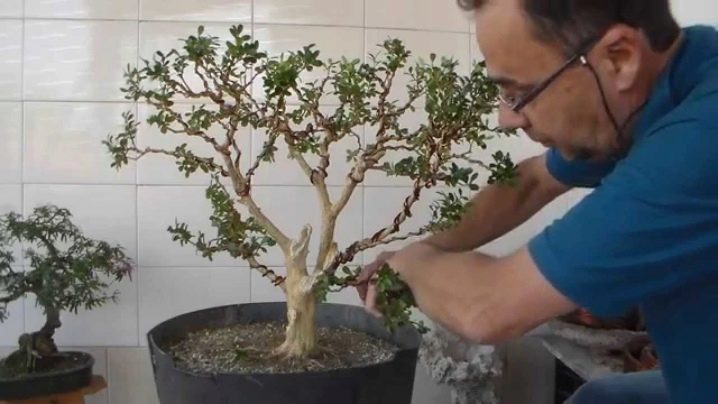
Diseases and pests
Ficus, like other plants, is susceptible to a number of diseases. Moreover, they can arise from both inadequate care and from content that does not meet the standards. The most common pests affecting ficus microcarp are spider mites and aphids. Fight both diseases in the same way - treat with a soap solution. If the treatment did not help, the ficus must either be transplanted or an insecticide must be used to destroy the pests.
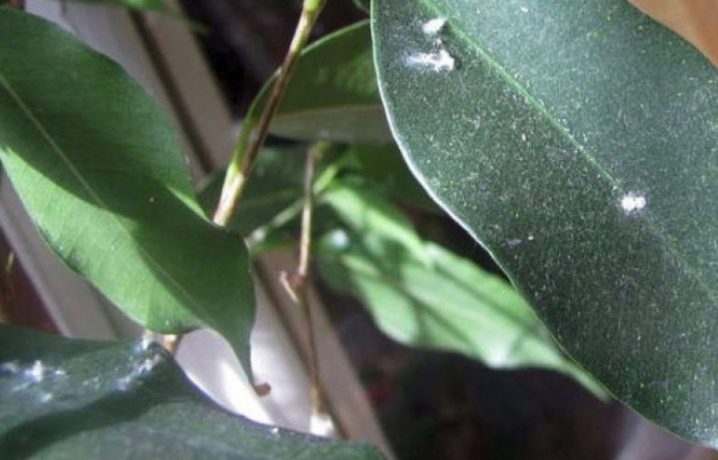
From excessive waterlogging (arising from excessively intense and frequent watering), the ficus "picks up" a fungal infection. Outwardly, this manifests itself in the fact that the plant is covered with a bloom of gray. And also with the development of the disease, the leaves acquire a dark shade and fall off.For treatment, you need to prune the plant for sanitary purposes, treat it with a fungicide and reduce the frequency and abundance of watering.

If the leaves turn yellow, it means that the air is dry, or direct rays of light fall on the plant. You need to make sure that next to the container where the ficus bonsai grows, there is another container with water, or periodically humidify the air in the room, and also rearrange the ficus so that neither the sun nor light falls on its leaves. Ficuses are afraid of sunburn. If the ficus sheds leaves only from below, there is nothing wrong with that, this is a natural process. But in the case when the leaves not only fly around, but also become smaller, most likely the ficus needs more nutrients. It needs to be fed.
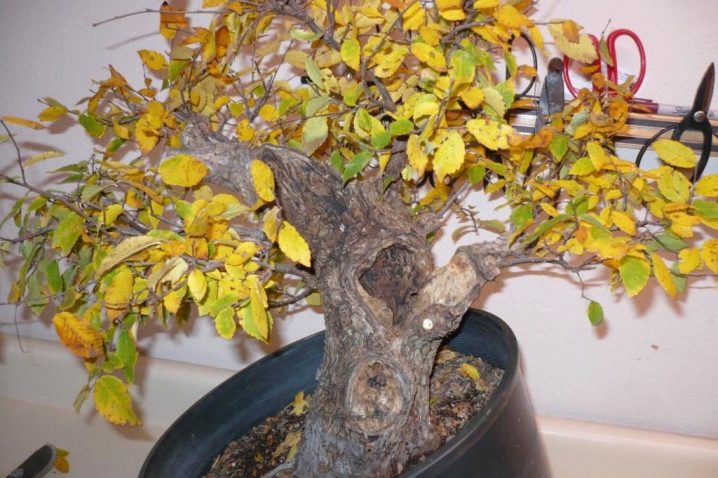
Growing bonsai is an exciting and somewhat meditative activity. It is especially valuable to see the result of the invested efforts - the ficus of a unique original shape.
For information on how to form a bonsai crown from a ficus, see the next video.































The comment was sent successfully.